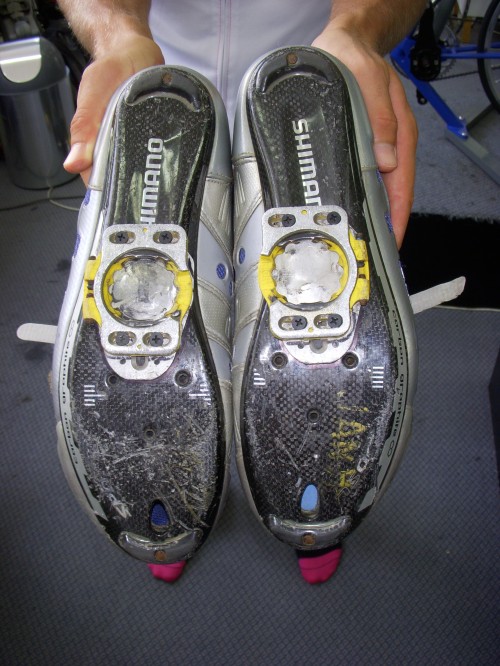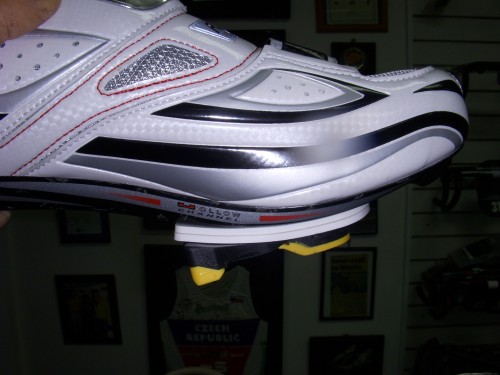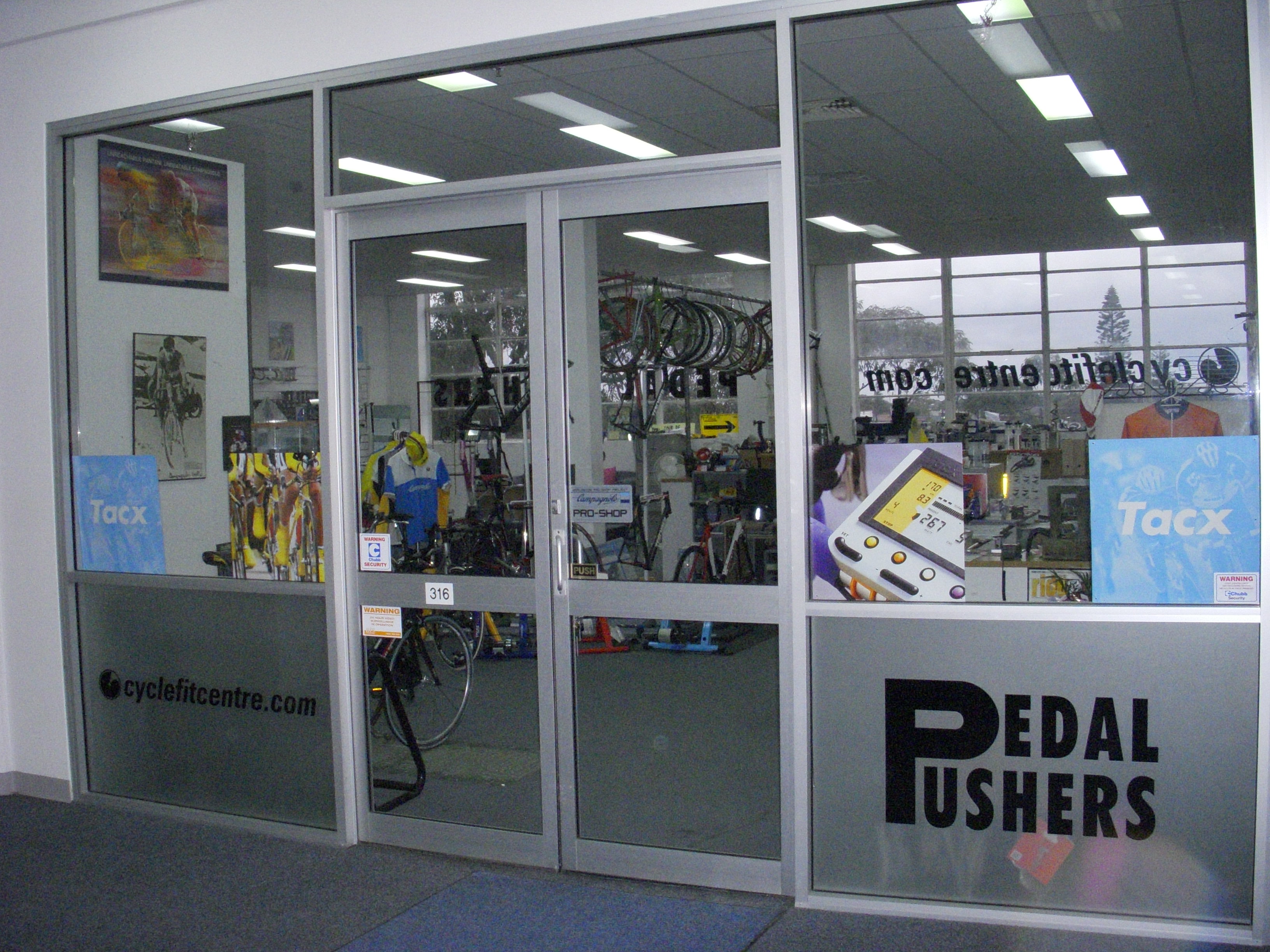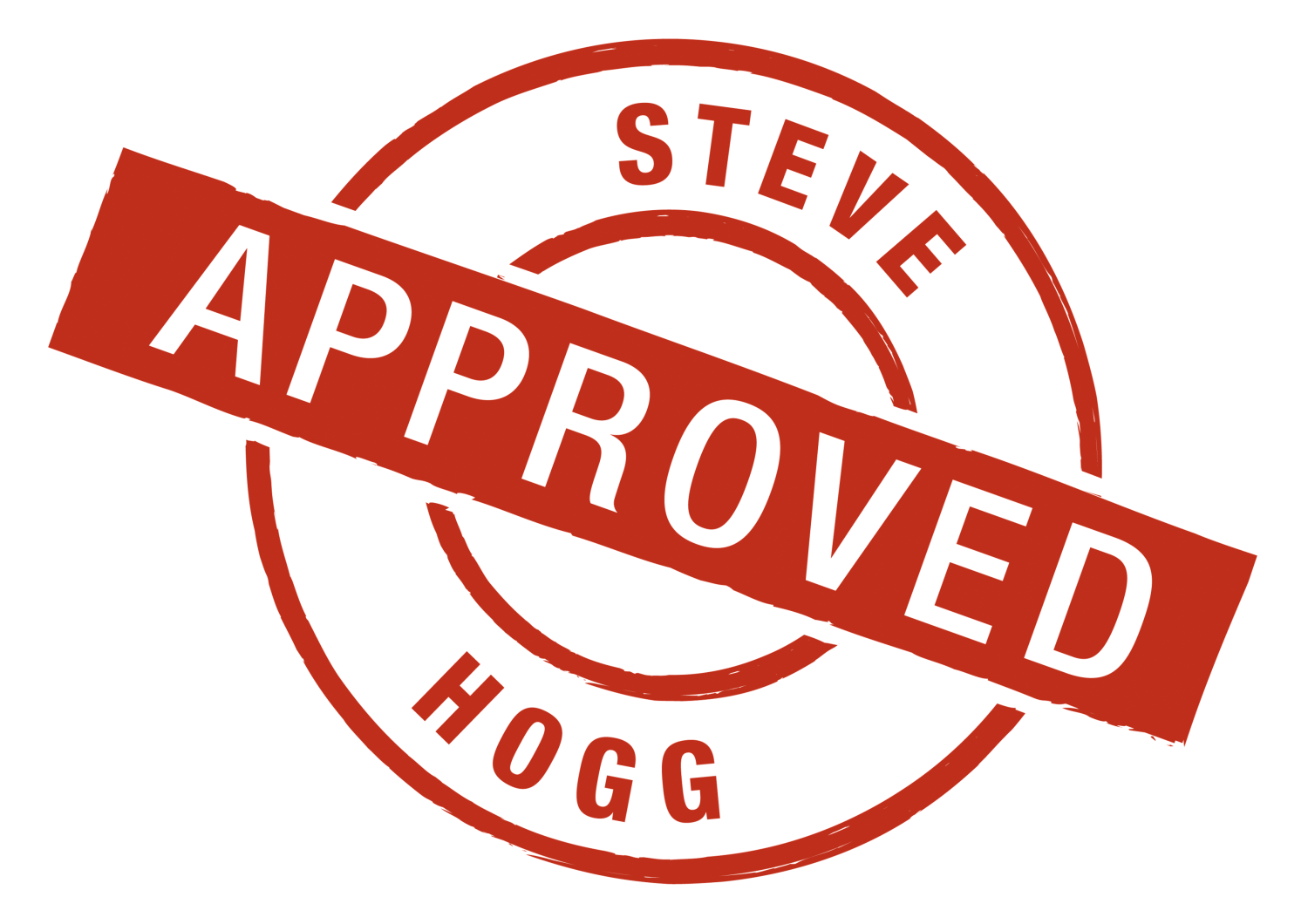Last Updated on December 19, 2012 by Steve Hogg

Meet Carl Paton. Carl is a New Zealand based Exercise Scientist who’s major area of interest and research is cycling. Carl coaches a number of U.S. and Euro based New Zealand pro’s and has spent a long time involved with elite cycling and triathlon. I first met Carl when I was giving a seminar at the Academy of Sport in Wellington in the late 90’s and we’ve remained friends since.
I use a midfoot cleat position. I don’t claim it is the best thing for all cycling applications but it has merit and is a valid option for many. I was introduced to midfoot cleat position by the originator (in a modern sense) of the concept, Gotz Heine, a German ex pro, team director, naturopath, chiropractor, shoe maker and inventor. Gotz is a little known behind the scenes guy in cycling with a number of firsts to his name. He produced the first carbon soled cycling shoes, the first cycling shoes with polyurethane uppers (the shiny stuff), and the first cycling shoes with reflective piping. All ideas since taken up by the mainstream cycling industry. He was also the first to use a titanium fabric coating as a means of keeping body temps lower.
So after meeting Gotz, and giving a midfoot cleat position a try 3 or 4 years back, I mentioned my experiences with midfoot cleat position to Carl. Carl is my idea of a scientist. Run any idea past him, no matter how outlandish it may seem at first appraisal, and he never rejects it outright. His attitude is more “That’s interesting, let’s do some research and see how it stacks up”. So when I mentioned midfoot cleat position to Carl, he was interested enough to perform a research study on it.
The results of that study were that midfoot cleat position offered no advantage to cycling performance but wasn’t a disadvantage either. That didn’t accord with my experience or that of others but the answer to the apparent difference in opinion was in the fine print of the study. 10 riders performed 60 minute efforts. The first 30 minutes were at 80% Vo2 Max; that is just below TT pace. The second 30 minutes were at as hard a self paced effort as they could sustain with the results being collated from that second 30 minute effort. This was all in the rider’s normal bike position and cleat position. Each returned on another day for a repeat test in midfoot cleat position with the only position modifications being a lowering of the seat and bars to allow for the much more rearward cleat position. The results of the study showed there was no performance benefit but Carl’s interest to research further was prompted by the lack of habituation. What that means is that the riders on the test had never used midfoot cleat position prior to the second test and had no time to get used to it. To Carl’s mind, the fact that they performed no worse despite zero adaptation time meant that the question of whether a midfoot cleat positioned offered any performance advantage was still open.
Midfoot cleat position below

Forefoot cleat position (with shim) below

The other prompt to research further was that several of the riders in the original study were triathletes. After the study a number of the riders wanted to keep the shoes modified for midfoot cleat position for a trial period. The triathletes that kept the shoes reported to Carl that their bike times hadn’t improved but that their run times off the bike had improved noticeably. So Carl’s second study was on the effects of running off the bike after riding with forefoot cleat position versus midfoot cleat position. The study is ready for publication and a copy of the abstract follows below:
Carl D. Paton and Tim Jardine
Faculty of Health & Sport Science, Eastern Institute of Technology, Hawkes Bay, NEW ZEALAND.
Introduction
An athlete’s ability to maintain a high running velocity during the run phase of a multi-sport event is a critical factor in determining an athlete’s overall race placing. Strategies that reduce the physiological load during the cycling phase of multi-sport events should enable an athlete to perform better during the running phase. A suggested performance enhancement strategy involves the moving of the foot anteriorly on the bicycle pedal platform (“mid-arch cleat position”) in order to unload the lower limbs (calf) musculature prior to the run. The current study examines the effects of foot position, during the cycling phase of a simulated duathlon, on the subsequent running performance of well-trained trained competitive triathletes.
Methods
In a randomized cross-over study design, twelve competitive triathletes completed a simulated duathlon race under two experimental conditions. The duathlon consisted of a 30 minute cycle on a velotron ergometer completed at 65% of the athletes previously determined peak aerobic power output (~85% of Max VO2) followed by a self-paced maximal effort 5.5km treadmill run. In the control condition the cycle phase was completed using the athletes’ normal (traditional) cycling cleat position. In the experimental condition athletes utilized a central foot (mid-arch) shoe cleat position. Respiratory gas measurements were made continuously throughout testing using an automated online metabolic system.
Results
Run time (mean ± between-subject SD) in the mid-arch condition was significantly (p=0.02) faster (1345 ± 133 s) than in the control condition (1376 ±152 s). The time difference is equivalent to an improvement in running speed of 2.2% (90% CI 0.8-3.6%). Oxygen consumption during the run phase was higher following the mid-arch cycle position by 2.2% (-0.5-5.1) though this was not significantly different to control (p=0.17). There were no significant differences or noticeable trends between conditions for any metabolic variables obtained during the cycling phase of the duathlon.
Discussion
We conclude that substantial performance gains can be achieved during the running phase of a duathlon when athletes utilise an arch-cleat shoe position during the cycling phase. The greater running velocity is associated with an ability to maintain an increased oxygen consumption, which may be caused by changes in lower limb muscle recruitment patterns during the cycling phase of the race.
In English, this means that the average improvement in run time was 30 seconds over 5kms. This is a large improvement by running standards and again, there was no habituation time given for the bike part of test. Athletes who had only ever used forefoot cleat position were changed instantly to midfoot and put through the test and showed significant gains in their ability to run off the bike. In other words they were fresher off the bike with the change in cleat position.
So now Carl is saddling up for a 3rd study with forefoot cleat position vs midfoot cleat position with a fixed power output to exhaustion. If one cleat position is more efficient over time than the other, then the athletes should last longer at a given output before they crack. This time, they will be allowed habituation time. Stay tuned.
How many people ride midfoot?
In percentage terms not many. I don’t push it at fit clients but do encourage anyone who shows interest to experiment. The great majority who do experiment ,stick with it but some don’t. Like everything else in cycling, personal preferences play a part. If nothing else, I hope this gets you thinking.
Postscript: For more about cleat position click here.
Note: Often, more specific answers to your questions can be found in the Comments below or in the eBooks section and FAQ page.
To learn more about bike fit products offered by Steve, click here.
Do you have a bike fit success story? Please go here to share.
Thank you for reading, return to the Blog page here or please comment below.Comments (1)
Comments are closed.







makes sense. saving your calves for the run segment. love to see info like this. thanks!